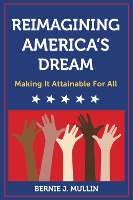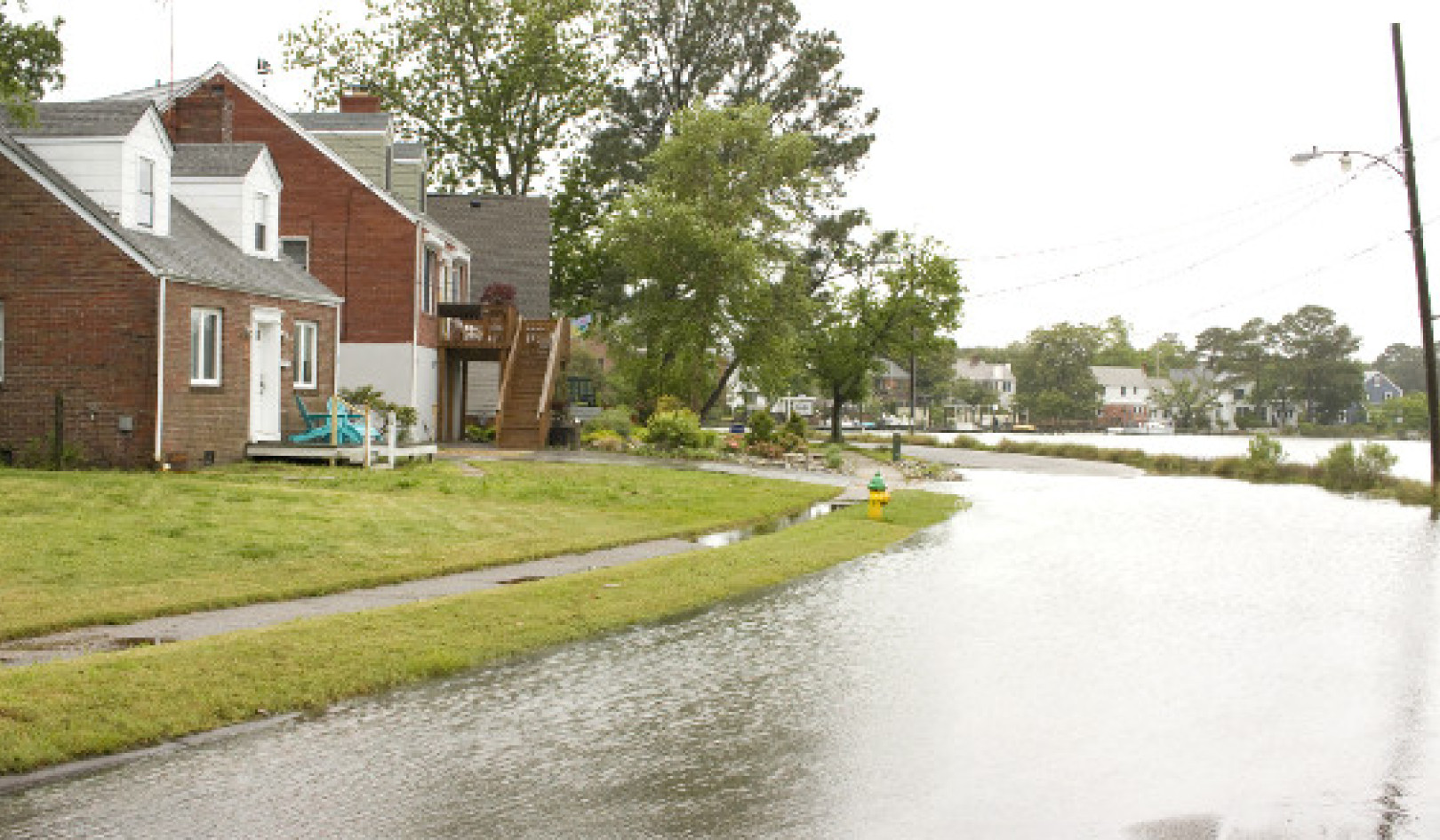
Image by Şahin Sezer Dinçer
In This Article:
- Learn how the American dream has evolved and the challenges it faces today.
- Explore the impact of economic and political divides on the American dream.
- Discover why reimagining the American dream is essential for a united future.
- Understand the importance of community and shared values in preserving the dream.
- Find out what steps moderates can take to reclaim the American dream from extremists.
An American Dream for Our Times
by Bernie J. Mullin.
My fifty years in America have taught me more lessons than I imagined I could learn in a single lifetime. I came to live in this country pursuing a vision of the American dream that had built up slowly, layers of fact, meaning, and fantasy growing slowly into something concrete. I pieced together my American dream from Hollywood movies and enthusiastic uncles, from warm-hearted mentors and the chatter of kids at camp during long, hot summers.
This patchwork understanding gave me a sense of not just what life was like in America but what life in America made possible. And those possibilities were intoxicating to me.
The American dream I absorbed from these disparate sources was almost identical to the classic version of the dream that had inspired generations of immigrants and native-born Americans before me. It was a dream of freedom: freedom from the constraints of class and the expectations of others; freedom from a small world in which opportunities were narrow; freedom to dream on a scale that matched that of America’s landscape; freedom to create, and build, and grow without the government, or anyone else, getting in the way. In short, the American dream seemed to offer me the freedom to build a better life and make the most of my potential.
Idealism Meets Reality
Of course, every ideal runs into reality at some point. Even a limited government has some rules you have to follow; a lot of that magnificent landscape is already taken by others pursuing their dreams; some people will have a jump on you thanks to the circumstances of their birth; and each individual must somehow reconcile their freedom to pursue their own goals with that of others who might want to compete or might want to steer the world in another direction entirely. These are the lessons every adult learns as they grow into themselves and their society. They don’t sink the American dream; they just pull it down to earth, bringing it out of the imagination as fantasy turns into reality.
Harder Problems to Reconcile
There were also harder problems to reconcile, as I soon learned after arriving on these shores. Historic injustices meant that some communities were held back by a lack of financial and educational capital. Redlining and other racist policies directly denied opportunities to some Americans because of the color of their skin. Educational opportunities could vary enormously from one school district to another across the country, giving children advantages or disadvantages that went beyond their natural talents and willingness to work hard.
Nevertheless, I could point to huge leaps forward over time that showed we were moving in the right direction as a nation, great steps being taken to right wrongs and reduce racial inequalities.
As I entered my third decade in the country, I came to realize that the progress we were making was often not as fast as it should be, and that this lack of speed in correcting matters represented an injustice in itself. Nevertheless, I was sure that we were still traveling in the right direction in most, if not all, of these areas.
And Then Along Came...
And then something changed. Or rather, a bunch of interconnected things changed, some for obvious reasons and other for reasons I still struggle to understand. From the late 1990s onward, the people of our country have seemed to be drifting apart from one another. Even as we continued to make important progress in many areas, views that were once confined to the fringes of our social and political lives started to take on a new prominence.
At the same time, previously unthinkable behavior began to become commonplace. While crime was falling across the nation, the unspeakable evil of school shootings became a regular news item. While acceptance and tolerance became ingrained popular values, a new maliciousness entered the political arena. While we preached peace and the value of human life, our nation engaged in a war of choice that led to hundreds of thousands of direct and indirect casualties.
I often wondered when I thought about these changes whether they were really changes at all. We had known epidemics of senseless violence before while another failed war of choice, the conflict in Vietnam, overlapped with my own early years in America.
Some unfortunate elements recur again and again throughout history. But there were also new things here, from the 24/7 media cycle to the digital revolution and our new hyperconnected world, which combined to make this modern age something genuinely different.
Many long-term trends have slowed or begun to reverse over the last twenty years. Social mobility is down; life expectancy is falling for many; trust in each other, in our politicians, in our system of government, and all of our pillar institutions, such as schools and religion, are at lows that have never been seen before. These trends reflect real changes in how we live and how we relate to each other.
Is The American Dream Still Intact?
So, where does this leave the American dream? Parts of it are still intact. Indeed, in many senses many Americans have more opportunities than at any point in the past. Gender equality is closer than it has ever been to a reality. Racial equality has taken enormous steps forward over the last twenty-five years. Asian Americans and Hispanic Americans are increasingly prominent in business and politics, and Native Americans are now receiving some measure of respect and restitution for what they lost as the United States expanded across their territories. Gay rights have also stepped into a new era with an unprecedented degree of acceptance of different identities and lifestyles. In all these areas, more Americans have more freedom to build the lives they wish to live than did their parents or any earlier generation.
On the economic front, the picture is much less rosy. The economic engine of the American dream has stalled for many. America itself continues to be a global powerhouse of economic growth and innovation. But the upward path on which the American people previously traveled together has now split into two branches. Well-off Americans continue to prosper.
However, those in the bottom 50 percent of incomes have seen wages stagnate, with many now earning less than their parents did at the same age. This economic parting of the ways is one of the most fundamental divisions in American society today.
For many Americans, the expectation of economic progress has stalled or disappeared entirely. This is the key fault line in American society today, dividing our nation into those who can expect to enjoy the benefits of our national dream and those who cannot. Importantly, this line also divides Americans in two other critical areas that determine quality of life: education and health care.
The Polarizing Force of Political Division
The other great polarizing force in America today is political division. Just like the economic divide, our political strife is pulling Americans apart from one another and setting them on very different trajectories.
The danger in this area is both equally real and fundamentally connected to the economic divide. If we cannot gather the fraying threads and pull the people of our nation back into a single harmonious unit, we may end up without a recognizable America in which to live out the dream.
Our political divisions are being driven first by the culmination of long-term trends in the American two-party system and then supercharged by developments in the media and technology landscapes. The result is that our politics have increasingly become a tug-of-war between those on the extreme right and the extreme left, while the moderates—both those with party affiliations and those who identify as independents—are frozen out of the debate.
Sensible, centrist positions are rarely able to gain traction because the party machines are captured by those on the fringes, leading to a sense that our politics are broken and that the country is being run in a way that satisfies nobody. The result is that many Americans feel alienated from each other and from their national community, fracturing the unity that is necessary for any sort of national dream or ideal to have true motivating power. The social and political paralysis this division causes also shuts off the path to any kind of solution to the economic divisions that deny access to the American dream.
Moving Forward Together
If we are to start moving forward together again as a single nation gathered around a shared national goal, we need to reimagine the American dream in two different ways. First, we need to adapt it to reflect the reality of the world we now live in, a world that is more connected than ever and yet riven by deeper divides than this country has faced for a long time.
To achieve this, we need to recalibrate the values that underpin the American dream. We need to add a greater focus on the community and the place of the individual within it, a recognition that nobody succeeds in a vacuum, and that it is our society as a whole that provides the stable foundation on which each of us can build our lives.
Reimagining A Shared American Dream
We must reimagine the dream as something essentially shared, something that connects us to each other and acknowledges the value of a higher power that lies outside ourselves. Then, with that reimagined dream before us, we must take a second step, turning outward and focusing our attention on making the dream attainable for all.
There are some immediate steps we can all take toward these goals. It is our duty as moderates who care about our country to refuse the easy path of ceding the political arena to extremists of either sort. On the one hand, to fulfil our responsibilities as a moderate majority that has the interests of our whole nation at its heart, we have to commit to being properly informed and educated about the key issues of the day. That means refusing to accept our news from the easiest sources, such as our social media feeds, and instead, devoting time and effort to informing ourselves about the nuances of what is really going on.
We need to do the hard work of rejecting partisan political participation and instead think about and engage with specific issues. If we ever find ourselves in full agreement with party spokespeople or political commentators from any wing, that is a good guide to tell us we are almost certainly not thinking adequately about the issues.
At a practical level, we need to set the value of community coherence above and beyond any other individual issue, refusing to donate to, or support in any other way, politicians or movements that seek to create divisions in our nation. This is particularly true when we agree with key elements of their policy platform.
Step Up and Fight for What You Believe In
However, we should also recognize that we cannot just click our fingers and turn the tanker around in a few easy steps. If we wish to reclaim our country from the extremists, we must be willing to put in the effort to make our voices heard and to step up and fight for what we believe in. And that requires both individual effort and thoughtful consideration of policy positions we can unite behind. The only way we will achieve long-term change is by focusing our efforts on the living future of America: our children and grandchildren.
We need to stand up and shout out to America that we are no longer willing to accept the extremism, the nastiness, the hatred, and the disinformation that has flooded into our politics from the fringes. If we are unwilling to use our time and energy to preserve our nation, we may soon find that we have ceded it to the extremists forever.
Copyright 2024. All Rights Reserved.
Article Source:
BOOK: Reimagining America's Dream
Reimagining America's Dream: Making It Attainable for All
by Bernie J. Mullin.
 When Bernie J. Mullin first arrived in the United States in the 1970s, he saw his new home as a land of unrivaled opportunity. In the fifty years since, he has embraced everything that America has to offer. Bernie’s American journey has seen him rise from college student to pioneer of a new academic discipline, and from small business owner to senior roles at some of America’s most beloved sports institutions. But as his own star rose, Bernie watched in alarm as the ties that bind America together began to come loose. Reimagining America’s Dream is his prescription for the fever that is pulling America apart.
When Bernie J. Mullin first arrived in the United States in the 1970s, he saw his new home as a land of unrivaled opportunity. In the fifty years since, he has embraced everything that America has to offer. Bernie’s American journey has seen him rise from college student to pioneer of a new academic discipline, and from small business owner to senior roles at some of America’s most beloved sports institutions. But as his own star rose, Bernie watched in alarm as the ties that bind America together began to come loose. Reimagining America’s Dream is his prescription for the fever that is pulling America apart.
This book shows that the American dream has become increasingly unattainable for many of this country’s citizens. And as that dream fades, so the fabric of our nation begins to fray. To grasp the promise of an ever-more perfect union, we need a common purpose. Reimagining America’s Dream maps a path forward for our nation. It offers a prescription for our current ills and a positive vision for a future in which every American can realize the fruits of their talents and labor. It shows how we can make the American dream attainable for all
For more info and/or to order this book, click here. Also available as a Kindle edition.
About the Author
 Dr Bernie Mullin is a groundbreaking sport and entertainment industry executive who's turned around franchises, set all-time revenue and attendance records, and generated $1.5+ billion in revenues for brands from the NFL to the US Open Tennis with his agency, The Aspire Sport Marketing Group. He was CEO of NBA and NHL teams and CMO of the NBA. He's also a globally acclaimed speaker, podcaster, author, and humanitarian who has served on multiple boards, including the United Way; YMCA; and Make a Wish Foundation. His The Aspire Difference Foundation (TADF) focuses on supporting single parents with preschool children. All net proceeds from his consulting, podcasts and books go to support TADF. His new book is Reimagining America’s Dream: Making It Attainable for All.
Dr Bernie Mullin is a groundbreaking sport and entertainment industry executive who's turned around franchises, set all-time revenue and attendance records, and generated $1.5+ billion in revenues for brands from the NFL to the US Open Tennis with his agency, The Aspire Sport Marketing Group. He was CEO of NBA and NHL teams and CMO of the NBA. He's also a globally acclaimed speaker, podcaster, author, and humanitarian who has served on multiple boards, including the United Way; YMCA; and Make a Wish Foundation. His The Aspire Difference Foundation (TADF) focuses on supporting single parents with preschool children. All net proceeds from his consulting, podcasts and books go to support TADF. His new book is Reimagining America’s Dream: Making It Attainable for All.

























